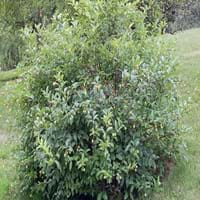Life Span
Annual and Perennial
Perennial
Origin
South Africa
North America, United States, Northeastern United States, Mid-Atlantic United States, Southeastern United States, North-Central United States, Central United States, South-Central United States, Canada
Types
Not Available
Autumn Flame, October Brilliance, Tiliford
Habitat
Boggy areas, Dappled Shade, Shady Edge, Sunny Edge, Woodland Garden Canopy
Forests, Wide range of ecological site
USDA Hardiness Zone
9-11
3-9
Sunset Zone
H1, 14, 15, 16, 17, 18, 19, 20, 21, 22, 23, 24
A2, A3, 1a, 1b, 2a, 2b, 3a, 3b, 4, 5, 6, 7, 8, 9, 14, 15, 16, 17
Habit
Upright/Erect
Oval or Rounded
Flower Color
Light Yellow, Ivory
Red
Flower Color Modifier
Not Available
Bicolor
Fruit Color
Brown
Red, Green, Brown
Leaf Color in Spring
Green
Light Green
Leaf Color in Summer
Green
Green, Dark Green
Leaf Color in Fall
Green
Yellow, Red, Orange, Yellow green, Gold, Dark Red, Orange Red
Leaf Color in Winter
Green
Not Available
Leaf Shape
Egg-shaped
Maple shaped
Plant Season
Spring, Summer, Fall, Winter
Spring, Summer, Fall
Sunlight
Full Sun, Partial Sun
Full Sun, Partial Sun
Growth Rate
Medium
Medium
Type of Soil
Loam, Sand
Clay, Loam, Sand
The pH of Soil
Acidic, Neutral
Acidic, Neutral, Alkaline
Soil Drainage
Average
Average
Bloom Time
Early Spring, Spring, Late Spring, Winter, Late Winter
Early Spring, Spring
Tolerances
Wet Site
Wet Site, Soil Compaction
Where to Plant?
Ground, Pot
Ground
How to Plant?
Seedlings, Stem Cutting
Seedlings, Vegetative Reproduction
Plant Maintenance
Medium
Medium
Watering Requirements
Requires 4 to 8 inches of water above the soil line
Water Deeply, Water when top layer of soil becomes dry
In Summer
Lots of watering
Lots of watering
In Spring
Moderate
Moderate
In Winter
Average Water
Average Water
Soil pH
Acidic, Neutral
Acidic, Neutral, Alkaline
Soil Type
Loam, Sand
Clay, Loam, Sand
Soil Drainage Capacity
Average
Average
Sun Exposure
Full Sun, Partial Sun
Full Sun, Partial Sun
Pruning
Prune in early summer, Remove damaged leaves, Remove dead branches, Remove dead leaves, Trim each shoot back to the first set of leaves
Remove dead branches, Remove dead leaves
Fertilizers
All-Purpose Liquid Fertilizer
General garden fertilizer, No need to fertilize every year
Pests and Diseases
Red blotch
Anthracnose, Bleeding canker, Decline, Fomes root rot, Ganoderma root rot, Laetiporus root rot, Leaf spot, Powdery mildew, Tar spot, Verticillium Wilt
Plant Tolerance
Wet Site
Soil Compaction, Wet Site
Flowers
Yes
Insignificant
Flower Petal Number
Not Available
Single
Fragrant Flower
Not Available
No
Fragrant Leaf
Not Available
No
Fragrant Bark/Stem
Not Available
No
Foliage Texture
Fine
Medium
Foliage Sheen
Matte
Matte
Attracts
Butterflies
Not Available
Allergy
Toxic
breathing problems, Eczema, flushing of face, Hives, Low blood pressure, Oral cavity, Rapid Heartbeat, Runny nose, Watery eyes
Aesthetic Uses
Showy Purposes
Showy Purposes
Beauty Benefits
Not Available
Not Available
Environmental Uses
Air purification
Air purification, Wildlife
Medicinal Uses
Astringent, Diaphoretic, Diuretic, Emetic, Febrifuge, Laxative, Odontalgic, Ophthalmic, Tonic
Not Available
Part of Plant Used
Bark, Fruits, Inner Bark, Root, Wood
Whole plant
Other Uses
Used for woodware
Edible syrup, Used as Ornamental plant
Used As Indoor Plant
No
Yes
Used As Outdoor Plant
Yes
Yes
Garden Design
Bog Garden, Cutflower, Dried Flower, Everlasting, Feature Plant, Mixed Border, Tropical
Feature Plant, Shade Trees, Street Trees
Botanical Name
BERZELIA lanuginosa
ACER rubrum
Common Name
Buttonbush
Northern Red Maple, Red Maple
In Hindi
Buttonbush shrub
लाल मेपल के पेड़
In German
Button Strauch
Red Maple Tree
In French
buttonbush arbuste
Red Maple Tree
In Spanish
arbusto buttonbush
Árbol de arce rojo
In Greek
Buttonbush θάμνος
Red Maple Tree
In Portuguese
arbusto Buttonbush
Árvore de bordo vermelho
In Polish
Buttonbush krzew
Red Maple Tree
In Latin
Frutex Buttonbush
Rubrum Maple ligno
Phylum
Magnoliophyta
Magnoliophyta
Class
Magnoliopsida
Magnoliopsida
Order
Rubiales
Sapindales
Family
Bruniaceae
Aceraceae
Clade
Angiosperms, Asterids, Eudicots
Angiosperms, Eudicots, Rosids
Tribe
Not Available
Not Available
Subfamily
Not Available
Not Available
Number of Species
Not Available
Season and Care of Buttonbush and Red Maple Tree
Season and care of Buttonbush and Red Maple Tree is important to know. While considering everything about Buttonbush and Red Maple Tree Care, growing season is an essential factor. Buttonbush season is Spring, Summer, Fall and Winter and Red Maple Tree season is Spring, Summer, Fall and Winter. The type of soil for Buttonbush is Loam, Sand and for Red Maple Tree is Clay, Loam, Sand while the PH of soil for Buttonbush is Acidic, Neutral and for Red Maple Tree is Acidic, Neutral, Alkaline.
Buttonbush and Red Maple Tree Physical Information
Buttonbush and Red Maple Tree physical information is very important for comparison. Buttonbush height is 365.76 cm and width 182.88 cm whereas Red Maple Tree height is 1,220.00 cm and width 1,220.00 cm. The color specification of Buttonbush and Red Maple Tree are as follows:
Buttonbush flower color: Light Yellow and Ivory
Buttonbush leaf color: Green
Red Maple Tree flower color: Red
- Red Maple Tree leaf color: Light Green
Care of Buttonbush and Red Maple Tree
Care of Buttonbush and Red Maple Tree include pruning, fertilizers, watering etc. Buttonbush pruning is done Prune in early summer, Remove damaged leaves, Remove dead branches, Remove dead leaves and Trim each shoot back to the first set of leaves and Red Maple Tree pruning is done Remove dead branches and Remove dead leaves. In summer Buttonbush needs Lots of watering and in winter, it needs Average Water. Whereas, in summer Red Maple Tree needs Lots of watering and in winter, it needs Average Water.





